Strange History Of Stele Of Ankh-ef-en-Khonsu – ‘Stele Of Revealing’ Gave Birth To Thelema, A New Religion
Ellen Lloyd - AncientPages.com - Stele of Ankh-ef-en-Khonsu is an ancient Egyptian artifact that is also known as the "Stele of Revealing". Made of wood and covered with a painted plaster gesso, the stele was discovered in 1858 by François Auguste Ferdinand Mariette at the mortuary temple of the Dynasty 18 Pharaoh Hatshepsut, located at Dayr al-Bahri, on the west bank of the Nile, opposite the city of Luxor, Egypt.
The Stele Was Made For Montu-priest Ankh-ef-en-Khonsu
Depicting priests and priestesses, the funeral stele was made for Montu-priest Ankh-ef-en-Khonsu I, who lived in Thebes during the 25th and 26th dynasty.
Left: Stele Cairo A 9422 (Bulaq 666), depicting Nut, Behdety as the winged solar disk, Re-Harakhty seated on his throne, and the stele's owner, Ankh-ef-en-Khonsu i, Credit: Wikipedia - Right: Back of the stele. Credit. thelema101.com
It was found near his coffin. The top of the stele is decorated with an image of the sky goddess Nut. Depictions of the solar disk, table of offerings, and the god Re-Horakhty, Horus of the horizons are also clearly visible on the stele of Ankh-ef-en-Khonsu.
The stele was first kept in the former Bulaq Museum under inventory number 666. Later, around 1902 it was moved to the Egyptian Museum of Cairo (inventory number A 9422; Temporary Register Number 25/12/24/11), where it remains today.
The meaning of the name Ankh-ef-en-Khonsu has been debated. In The Scarlet Letter, Sr. Lutea suggests that the name may be closely related to the Ankh, which is both a tool and a symbol meaning 'new life.' According to Sr. Lutea the entire name may be translated as 'the truth that has crossed over.
Ancient Pages discussed the significance of the Ankh in a previous article.
As we mentioned, the Ankh is a mysterious ancient Egyptian symbol with many meanings and unknown history. It is one of many important ancient Egyptian symbols.
But is there really a connection between the Ankh and the priest Ankh-ef-en-Khonsu? Perhaps there is but most Egyptologists today translate the Montu-priest’s name as "He lives for Khonsu”. In Egyptian mythology, Khonsu is the god of the moon and he plays an important role in the creation of new life in all living creatures.
How The Stele Of Ankh-ef-en-Khonsu Became Associated With Thelema
Stele of Ankh-ef-en-Khonsu would most likely remain one of many Egyptian artifacts and go unnoticed, but it caught the eye of British occultist Aleister Crowley (1875 – 1947) and it has been connected with him and his new religion Thelema, ever since.
During a visit to Cairo in 1904, Crowley and his wife Rose saw the stele of Ankh-ef-en-Khonsu and Crowley became convinced that the stele had been produced to commemorate his own death 2500 years ago.
Khonsu, the ancient Egyptian moon-god, was depicted either as a falcon wearing the moon-disk on his head (left) or as the child of Amun and Mut. Credit: Public Domain
Crowley came to believe that he was a reincarnation of priest Ankh-ef-en-Khonsu. He claimed that this knowledge came to him while he heard the voice from an entity he called Aiwass who dictated to him Liber al vel Legis, the Book of the Law. Crowley was the scribe, so he must have been Ankh-f-n-khonsu, or so he said.
Of course, the belief in reincarnation was not an Egyptian concept. Ancient Egyptians believed in afterlife, but they did not consider it likely that a soul left a body and then returned to a different body.
This notion did not stop Crowley who now believed that he was the prophet of a New Age, the Aeon of Horus. When Crowley and his wife Rose visited the museum to look at the stele they noticed its catalogue number was 666, a number holding religious significance in Thelema.
See also:
Khonsu: Enigmatic Egyptian Moon God, Healer, Protector And His Dark Side
Mesha Stele: One Of The Most Valuable Biblical Artifacts
Stele Of Tell al-Rimah And Deeds Of Assyrian King Adad-nirari Against Rebellious Kings
Sumerian Stele Of The Vultures: Oldest Known Historical Records Carved On Limestone
To Christians, it is the Number of the Beast, but Crowley considered it to be a solar number. It is the sum of the numbers inside the 6-by-6 magic square, which is associated with the Sun. Crowley wrote in his biography that his purpose in life had been to "bring oriental wisdom to Europe and to restore paganism in a purer form". He became convinced that the twentieth century marked humanity's entry to the Aeon of Horus, a new era, in which humans would take increasing control of their destiny.
His new religion Thelema, sometimes also referred to as the New Age movement, or just new philosophy was based on the idea that human beings each have their own True Will that they should discover and pursue, and that this exists in harmony with the Cosmic Will that pervades the universe.
Thelema, greatly influenced by the Stele Of Ankh-ef-en-Khonsu continued to develop and spread following Crowley's death.
Written by Ellen Lloyd – AncientPages.com
Copyright © AncientPages.com & Ellen Lloyd All rights reserved. This material may not be published, broadcast, rewritten or redistributed in whole or part without the express written permission of AncientPages.com and Ellen Lloyd
More From Ancient Pages
-
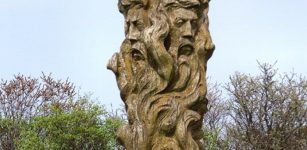 Svantevit – Four-Headed War God Of The Slavic Peoples Of Central Europe
Featured Stories | Sep 13, 2015
Svantevit – Four-Headed War God Of The Slavic Peoples Of Central Europe
Featured Stories | Sep 13, 2015 -
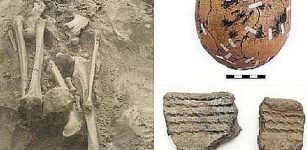 Eastern Baltic’s Communities Of First Farmers And Hunter-Gatherers Merged Slowly
Archaeology | Dec 10, 2023
Eastern Baltic’s Communities Of First Farmers And Hunter-Gatherers Merged Slowly
Archaeology | Dec 10, 2023 -
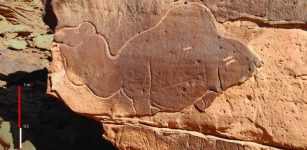 Huge Ancient Animal Sculptures Made By Unknown Carvers At Camel Site In Saudi Arabia Puzzle Archaeologists
Archaeology | Feb 14, 2018
Huge Ancient Animal Sculptures Made By Unknown Carvers At Camel Site In Saudi Arabia Puzzle Archaeologists
Archaeology | Feb 14, 2018 -
 500-Year-Old Transylvanian Diaries Reveal How The Little Ice Age Transformed Life And Death In The Region
Archaeology | Feb 12, 2025
500-Year-Old Transylvanian Diaries Reveal How The Little Ice Age Transformed Life And Death In The Region
Archaeology | Feb 12, 2025 -
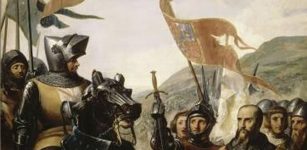 Bertrand du Guesclin: ‘Eagle Of Brittany’ Brave, French Commander And His Clash With Sir Thomas Of Canterbury
Featured Stories | May 1, 2023
Bertrand du Guesclin: ‘Eagle Of Brittany’ Brave, French Commander And His Clash With Sir Thomas Of Canterbury
Featured Stories | May 1, 2023 -
 DNA Study Of Ice Age Survivors Reveals A Surprise About The Gravettian Culture
Archaeology | Mar 1, 2023
DNA Study Of Ice Age Survivors Reveals A Surprise About The Gravettian Culture
Archaeology | Mar 1, 2023 -
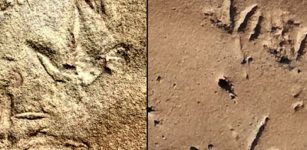 290-Million-Year-Old Bird-Like Footprints Left By Unknown Animals Found In Africa
Fossils | Nov 30, 2023
290-Million-Year-Old Bird-Like Footprints Left By Unknown Animals Found In Africa
Fossils | Nov 30, 2023 -
 Australia’s Submerged Indigenous Sites – New Discoveries And Study
Archaeology | Aug 31, 2021
Australia’s Submerged Indigenous Sites – New Discoveries And Study
Archaeology | Aug 31, 2021 -
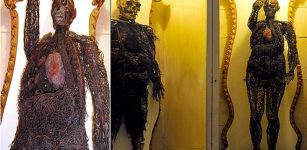 Incredible Anatomical Human Machines – Two Fleshless Bodies Mystery
Featured Stories | Jul 24, 2018
Incredible Anatomical Human Machines – Two Fleshless Bodies Mystery
Featured Stories | Jul 24, 2018 -
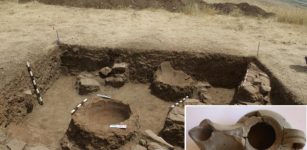 Has The Mysterious Lost Capital Of The Ancient Kingdom Of Lyncestis Been Unearthed In Northern Macedonia?
Archaeology | Apr 11, 2025
Has The Mysterious Lost Capital Of The Ancient Kingdom Of Lyncestis Been Unearthed In Northern Macedonia?
Archaeology | Apr 11, 2025 -
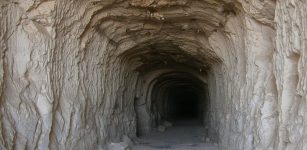 Ancient Superhighways: 12,000-Year-Old Massive Underground Tunnels From Scotland To Turkey
Featured Stories | Jul 19, 2015
Ancient Superhighways: 12,000-Year-Old Massive Underground Tunnels From Scotland To Turkey
Featured Stories | Jul 19, 2015 -
 Ogham: Unique Celtic Alphabet Used By Druids And Abandoned During Christian Era
Featured Stories | Jul 9, 2021
Ogham: Unique Celtic Alphabet Used By Druids And Abandoned During Christian Era
Featured Stories | Jul 9, 2021 -
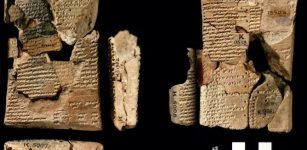 AI Is Helping Researchers To Read Ancient Mesopotamian Literature
Artifacts | May 26, 2023
AI Is Helping Researchers To Read Ancient Mesopotamian Literature
Artifacts | May 26, 2023 -
 Mystery Of The Seven Sages In Ancient Myths And Legends
Featured Stories | Feb 20, 2016
Mystery Of The Seven Sages In Ancient Myths And Legends
Featured Stories | Feb 20, 2016 -
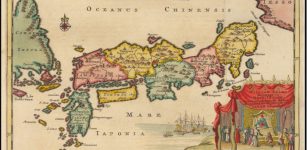 Spread Of Transeurasian Languages Was Due To Agriculture Study Reveals
Archaeology | Nov 10, 2021
Spread Of Transeurasian Languages Was Due To Agriculture Study Reveals
Archaeology | Nov 10, 2021 -
 Neolithic Farmers Invented Methods To Fight Pests 8,000 Years Ago
Archaeology | Jun 30, 2022
Neolithic Farmers Invented Methods To Fight Pests 8,000 Years Ago
Archaeology | Jun 30, 2022 -
 Ancient Secrets Of Mistletoe – Sacred Celtic Plant With Magical Powers
Ancient Traditions And Customs | Dec 17, 2024
Ancient Secrets Of Mistletoe – Sacred Celtic Plant With Magical Powers
Ancient Traditions And Customs | Dec 17, 2024 -
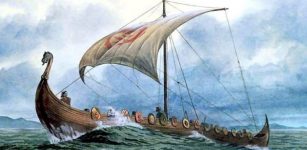 Long Serpent: Most Famous Viking Longship Of King Olav Tryggvason Of Norway And Its Fate
Featured Stories | Jun 7, 2017
Long Serpent: Most Famous Viking Longship Of King Olav Tryggvason Of Norway And Its Fate
Featured Stories | Jun 7, 2017 -
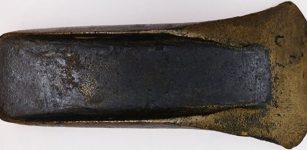 Truth Behind Mysterious Ancient Metal Depositions Revealed By Scientists
Archaeology | Dec 8, 2021
Truth Behind Mysterious Ancient Metal Depositions Revealed By Scientists
Archaeology | Dec 8, 2021 -
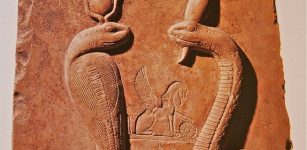 The Mystery Of Serpent Worship
Featured Stories | Jun 25, 2019
The Mystery Of Serpent Worship
Featured Stories | Jun 25, 2019


